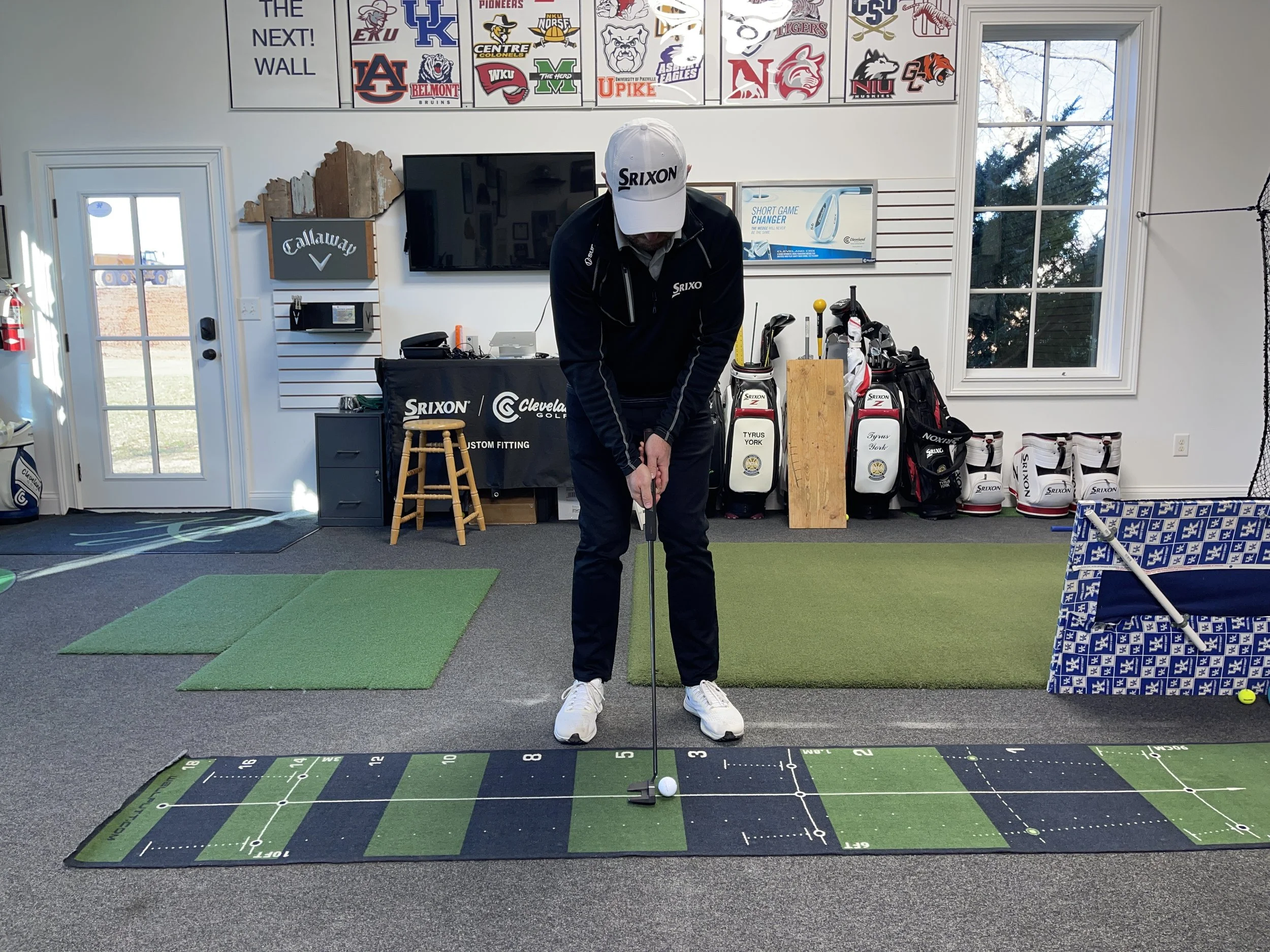Do you hit a lot of range balls? Especially this time of year when the weather is keeping many of us away from the golf course, hitting range balls (indoors from a mat) may be your only option.
When hitting shots from a mat, you get the luxury of not having to worry about frequently cleaning dirt and grass from the club. However, if you take a close look at the picture below you will see that the wedge on the left has a dark spot, almost like a dark film, on the face where clearly impact with the ball has been occurring.
When I look into the golf bags of my students this time of year, it is not unusual for me to find several of their club faces that look like the one on the left. So what’s the big deal?
It wasn’t until my recent purchase of my Bushnell Launch Pro that I started to notice a problem. I have long known that in order to get the most spin and accurate performance from your wedges that the club face better be free of anything that may reduce friction with the ball*. Ask any student of mine about my insistence that they keep their clubs clean for further proof.
*Side Note on Spin
Spin is a very valuable tool in making your wedge shots accurate and predictable. Created when friction occurs between the ball and the club face, spin will help your ball flight remain consistent as well as makes what the ball does when it hits the green more predictable. A wedge shot lacking in spin will have a tendency to “run up” the club face resulting in inconsistent launch angles and carry distances. When you’re inside 100 yards and can’t predict how far the ball will go due to low spin numbers, good luck getting as close to hole as you may want to be.
So when I started training my students with the LaunchPro, I noticed that their spin numbers on their wedges were very low. For example, on a 60 yard wedge shot, we were recording spin rates around 2100 RPMS. Ideally you would want spin about 1000x the distance of the shot (6000 RPMS for a 60 yard shot).
When I first noticed this I went through the usual suspects for low spin: grass clumped on the club face, wet golf ball, poor delivery of the club through impact… etc. But silly me had missed something very obvious.
Their clubs were “clean”, the ball was dry, and I could detect nothing in their delivery that made me concerned. That’s when I noticed what we see in the picture above. Depending on the type of range ball, the cover will literally melt an extremely thin layer of plastic (or whatever the cover of the ball is made of) when the friction occurs between the ball and the club face. After several shots this layer can become quite noticeable.
The only thing worse then having a dirty club face would be literally having a layer of film, kind of like a nonstick pan surface, on your club face. This dramatically reduces spin, and therefore creates the problems mentioned above.
When we cleaned the face, and made it look like the wedge on the right in the photo, spin returned to 6000-7000 RPMS instantly. Ball flights came down and the carry distance dispersion was tighter.
So the moral of this story is to make sure you are keeping your clubs clean! Even if the only thing on your club face is that annoying mark left from a range ball.
The most effective way to clean your club face is to use a brush similar to the one below:

















